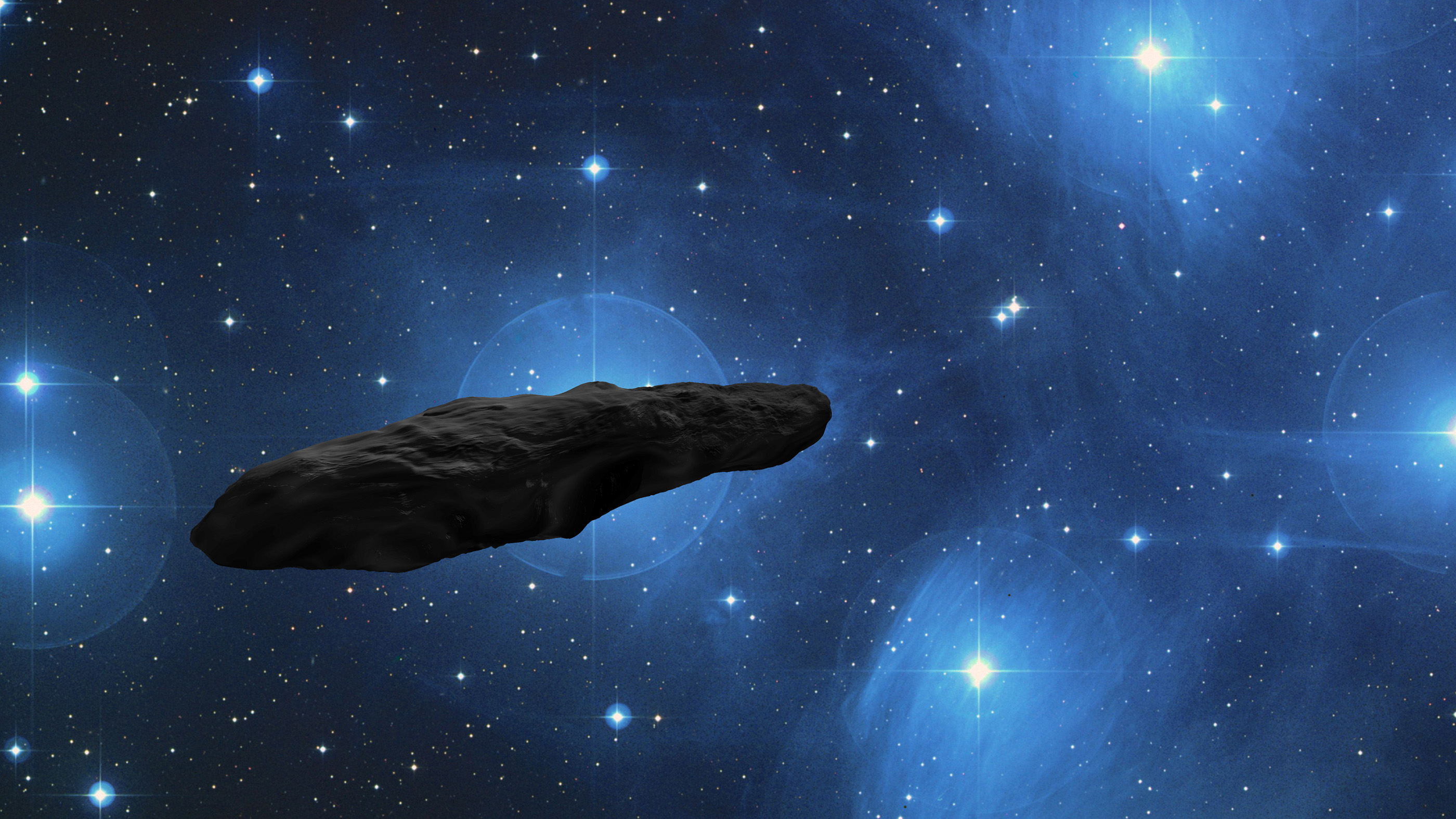A spacecraft could visit weird interloper 'Oumuamua. Here's how.
A mission launched by 2028 could study the weird space object up close.

In 2017, a totally bizarre object zipped through the solar system. Nicknamed 'Oumuamua, this interstellar traveler was too far away and too speedy to be identified. Years later, scientists are still puzzling over what it might have been.
It's not too late to go see, according to a new research paper posted to the preprint website arXiv. By executing a complex maneuver around Jupiter, a spacecraft launched by 2028 could catch up with 'Oumuamua in 26 years.
"What we need is a photograph of it, very close, an in situ photograph," said lead author Adam Hibberd, a software engineer at the nonprofit Initiative for Interstellar Studies (i4is) in the United Kingdom. "And the only way we can do that is by sending a mission."
Related: Extraterrestrial evidence: 10 incredible findings about aliens
'Oumuamua was last seen zipping through the solar system at 57,000 mph (92,000 km/h). That velocity — and the object's acceleration around the sun — indicated that it came from outside the solar system. Theories for what it might have been proliferated. A chunk of nitrogen ice that snapped off of an "alien Pluto"? A clump of debris from a comet? A piece of alien technology?
'Oumuamua's passage also cued a flurry of ideas for how to send a probe to see the object firsthand. 'Oumuamua sped past Saturn's orbit in January 2019 and is estimated to be somewhere outside Neptune's orbit as of this year, headed toward the constellation Pegasus. Some of the ideas on how to chase 'Oumuamua down involved slingshotting a spacecraft around the sun, thus enabling a burst of speed without using much fuel. But such a solar maneuver would require heavy solar shielding, which would add weight and expense, Hibberd told Live Science.
Under i4is' "Project Lyra,'' Hibberd and his colleagues in the U.S. and Europe cooked up an alternative, known as a "Jupiter Oberth maneuver." A spacecraft would launch from Earth, and then swing around both Venus and Earth. This would get it to Jupiter with minimal fuel, Hibberd said. Once at Jupiter, the spacecraft would burn fuel to accelerate, allowing it to slingshot past Jupiter toward 'Oumuamua at about 82,800 mph (133,200 km/h). Jupiter wouldn't give as much of a gravitational assist as the sun, Hibberd said, but it could still get the job done.
Sign up for the Live Science daily newsletter now
Get the world’s most fascinating discoveries delivered straight to your inbox.
"Jupiter has one-thousandth the mass of the sun — so it's much less massive — and you don't get quite as much, to use the expression, 'bang for your buck,' but you do get there at fairly high speed," he said.
Whether any such mission will ever happen is an open question. Hibberd and his colleagues submitted a white paper to NASA's Decadal Survey, which queries the space community every 10 years for mission ideas and priorities.
"We'll see what comes of that white paper," Hibberd said. "We're trying to get encouragement from the scientific community — after all, it would solve a lot of their questions."
Originally published on Live Science.

Stephanie Pappas is a contributing writer for Live Science, covering topics ranging from geoscience to archaeology to the human brain and behavior. She was previously a senior writer for Live Science but is now a freelancer based in Denver, Colorado, and regularly contributes to Scientific American and The Monitor, the monthly magazine of the American Psychological Association. Stephanie received a bachelor's degree in psychology from the University of South Carolina and a graduate certificate in science communication from the University of California, Santa Cruz.









